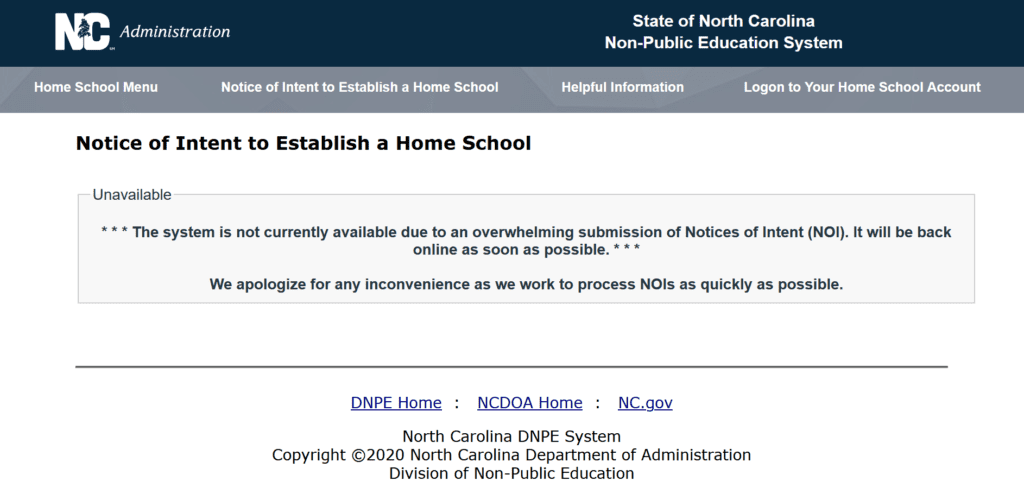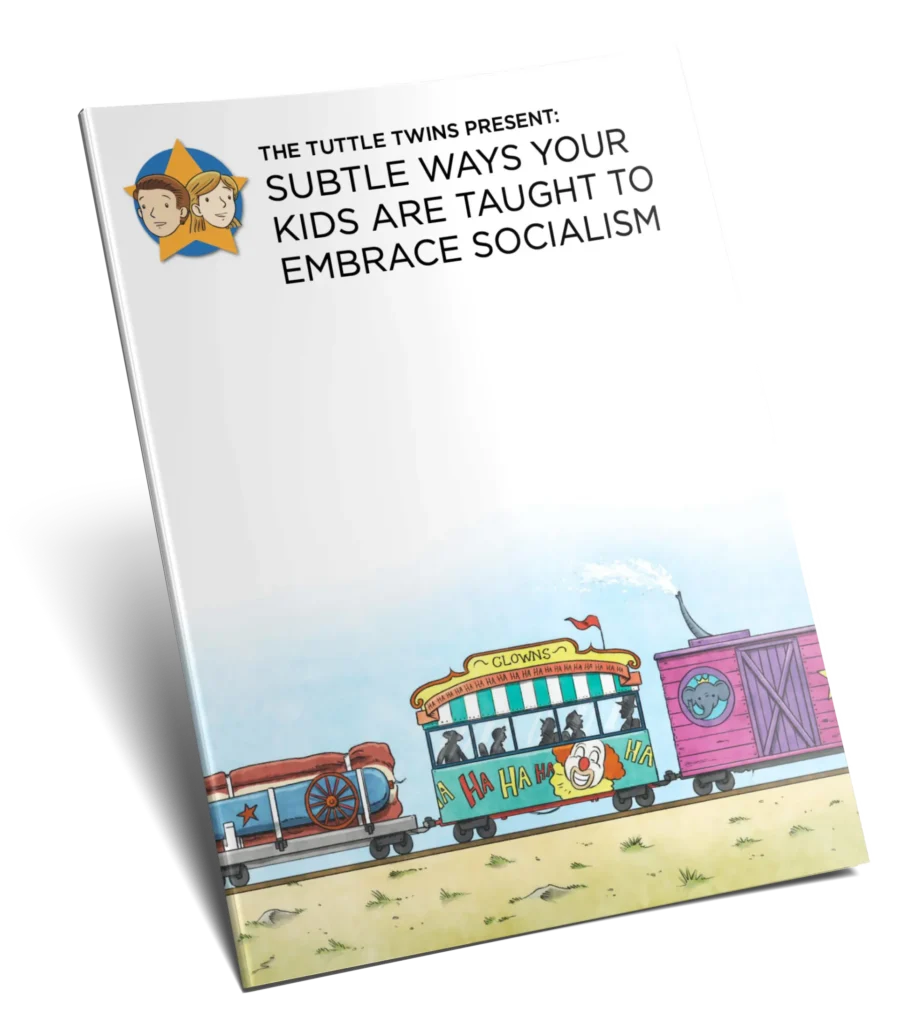SumthinWhittee
Hopefully Santa gives these out this year. Best gift to help counter the elementary school propaganda. #tuttletwins

Here we are, almost halfway through July in what has definitely been the strangest year of my life. As August approaches, a lot of states are starting to make announcements about their plans for the next school year. I’ve read articles and seen stories from across the country that show a pretty varied approach to “keep us safe” this next year.
Some places, like Cherokee County, Georgia, have voted to resume school in about two weeks with very limited “COVID-19 precautions.” They have said that they will not be requiring masking for their students—a move that some parents support, and others do not.
The state of Utah has started publishing its school reopening plan, with our governor making the announcement yesterday that masking will be mandatory for all students, faculty, staff, and visitors—even in rural areas where there’s no evidence of coronavirus.
As a lot of us have anticipated as we’ve watched the continuing COVID-19 reaction, there seems to be a strong response from a lot of parents who feel that they simply can’t put their kids in an environment that they don’t think would be in their best interest. Kerry McDonald recently noted that,
According to a recent USA Today/Ipsos poll, 60 percent of parents surveyed said they will likely choose at-home learning this fall rather than send their children to school even if the schools reopen for in-person learning. Thirty percent of parents surveyed said they were “very likely” to keep their children home.
While some of these parents may opt for an online version of school-at-home tied to their district, many states are seeing a surge in the number of parents withdrawing their children from school in favor of independent homeschooling. From coast to coast, and everywhere in between, more parents are opting out of conventional schooling this year, citing onerous social distancing requirements as a primary reason.
A friend of mine who lives in North Carolina recently shared a screenshot of what local parents saw on the state’s website when they tried to file their Letter of Intent to homeschool this year. So many parents were trying to notify the state that they crashed the site!
Spencer Mason from North Carolinians for Home Education said that a recent study revealed that a whopping 40% of North Carolina families intend to homeschool their children this year!
Incredible.
Another person worth following on the issue, Corey DeAngelis, recently said in a Reason article that,
Between the complete closures of some schools and the poor performance of schools that have implemented distance learning, taxpayers are paying a lot of money for inadequate education for their children. Nor was the status quo before COVID-19 anything to celebrate. The U.S. has increased inflation-adjusted per-student spending by 280 percent since 1960, and we currently spend over $15,000 per child each year. Meanwhile, the Nation’s Report Card shows that only 15 percent of U.S. students are proficient in U.S. history and 2 out of every 3 students are not proficient in reading.
Reasonable people can argue about whether we are getting an acceptable return on investment. But why should anyone have to continue paying the same amount for schools that aren’t even open?
The American Federation of Teachers claims that government-run schools across the country need over $116 billion to reopen safely. That’s an enormous amount of money. It’s about twice the total amount the federal government allocated towards K-12 education in the most recent school year. It’s also close to the amount the U.S. dedicated to the Marshall Plan to rebuild Europe after World War II. What’s more, the federal CARES act has already provided over $13 billion to assist in reopening schools. Only 1.5 percent of that money has actually been used by states. Where is all of the money going?
The debate thus far hasn’t taken the preferences of families—the customers who are actually paying for all this education—into consideration.
He went on to propose that the money allocated for each student should actually follow the student—regardless of what type of schooling the parents decide is best—rather than tax dollars continuing to fund the public education system that is clearly floundering in its ability to provide quality educational services to families. He argues that rather than focusing on ways to teach effectively this next school year, teacher unions are more concerned with protecting their monopoly on education—essentially holding our kids hostage to their demands.
Already, teachers unions have made it hard for parents to enroll their kids in quality distance learning programs. The teachers union in Oregon successfully lobbied to prevent families from enrolling in virtual charter schools. The Pennsylvania Association of School Administrators similarly lobbied to prevent families from accessing virtual charter school options in the spring.
More recently, the California legislature just passed a bill that prevents education dollars from following students to virtual charter schools this school year. And it’s not like they’re demanding to do the teaching themselves. The Los Angeles teachers union struck a deal with their district that prevented teachers from being required to work more than 4 hours each day during the lockdown.
None of these efforts make any sense unless the purpose is to protect a monopoly from competition.
I think Corey makes some good points. We all know that competition always benefits the consumer, so schools having to compete for students (and funding) could prove pretty amazing for students!

A lot of us have been talking about this for a long time, but now that everything within the education system is so upended because of government responses to COVID-19, it seems more possible than ever before to actually see something like this become a reality.
Could the chaos of the last four months have a silver lining after all? I think that lays largely in the hands of parents and education-choice activists—but I’d say we definitely have a chance to bring about changes that six months ago seemed nearly impossible.
We rolled out our Free Market Rules economics curriculum one year ago, almost exactly, and parents seem  to be thrilled with it. We’re always adding new content, and are loving the feedback we are getting about kids—and their parents!—who are learning tons about the free market, and how the world around them works. They seem to especially like our Dinner Conversation Starters and the activities that accompany each lesson. Parents have been thrilled with the extra content meant to help the adult teaching the lesson delve a little deeper into topics that they might not know much about.
to be thrilled with it. We’re always adding new content, and are loving the feedback we are getting about kids—and their parents!—who are learning tons about the free market, and how the world around them works. They seem to especially like our Dinner Conversation Starters and the activities that accompany each lesson. Parents have been thrilled with the extra content meant to help the adult teaching the lesson delve a little deeper into topics that they might not know much about.
We’ve been putting out more digital content the last few weeks to help those who might be just starting homeschool build their curriculum without forking over a fortune buying duplicate books and workbooks for their large families, or having to build a new room onto their house to store all the books. I see some of you. 😉

We offer all of our books in audiobook format so that the whole family can listen to our books whenever they want—this is especially good for families with both younger and older kids so that younger children can listen to the books while mom or dad help older kids with work that requires more hands-on instruction.
We also offer all of our workbooks—we’ve got one for each of our eleven books—as printable PDFs so that parents only have to purchase the workbook once and can print them as many times as their need for as many children as they have.
This week, we’ve added four new ebooks that were previously only available as bonuses for special sales we’ve run. With titles like, Subtle Ways Your Kids are Taught to Embrace, Socialism, 13 Questions to Level-Up Your Family Dinner Conversations, 10 Tips for Raisin g an Entrepreneur, and our newest, 10 Important Facts About the Declaration of Independence, we’ve given parents a bunch of new content to expand on the lessons taught in our original series and in our weekly curriculum!
g an Entrepreneur, and our newest, 10 Important Facts About the Declaration of Independence, we’ve given parents a bunch of new content to expand on the lessons taught in our original series and in our weekly curriculum!
Despite all the bad in the world right now—and believe me, I know there’s plenty of it—I can’t help but feel hopeful and even a little bit excited about all the new possibilities for education choice and for parents being able to really craft the experience that best reaches the unique needs of their kids.
We’ll keep cranking out content for you guys to use to teach your kids the lessons of a free and prosperous society if you keep spreading the messages of liberty to everyone who will listen—and maybe encourage your new-to-homeschool friends and family to check out our work!
We can do this!
— Connor

There are many subtle ways that socialist ideas are being introduced, taught, and reinforced directly to your children.
Our e-book walks through several examples to help raise your attention to this agenda so you can help your children avoid being indoctrinated to support the state.
Hopefully Santa gives these out this year. Best gift to help counter the elementary school propaganda. #tuttletwins
When ur bedtime story teaches ur girl about the federal reserve & what a crock of crap it is. Vocab words: Medium of exchange & fiat currency. #tuttletwins for the win
“My just-turned-5 year old told me he is planning to read all the #TuttleTwins books today. It’s 10AM on Saturday and he’s already on his third. #Homeschooling ftw.”